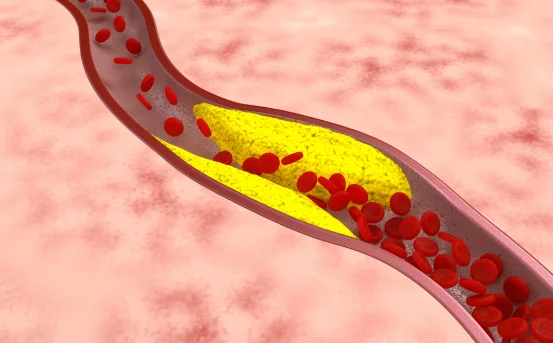Hydrocele is a common condition in males that causes swelling in the scrotum due to fluid accumulation around the testicles. Although hydroceles are usually painless and benign, they can cause discomfort, embarrassment, or be confused with more serious conditions like hernias or tumors. When the swelling persists or causes symptoms, hydrocele surgery becomes a reliable and effective treatment option.
In most cases, especially in infants, a hydrocele is harmless and resolves on its own within the first year of life. However, in adolescents and adults, hydroceles can persist, enlarge, or even develop suddenly often due to trauma, infections, or underlying inflammation in the testicular region. Although the condition itself is benign, it can lead to physical discomfort, a sense of heaviness in the scrotum, and embarrassment or self-consciousness, particularly when the swelling becomes visibly noticeable.
What Is a Hydrocele?
A hydrocele is a fluid-filled sac surrounding a testicle, leading to swelling in the scrotum. It is most common in newborns but can also occur in adult men, usually due to injury, infection, or inflammation.
There are two main types of hydrocele:
- Communicating Hydrocele :- Occurs when the sac surrounding the testicle does not close properly after birth, allowing abdominal fluid to enter.
- Non-communicating Hydrocele :- Happens when the sac closes, but fluid remains trapped around the testicle.
Most hydroceles in infants resolve on their own within a year. However, persistent hydroceles or those that develop in adulthood may require surgical intervention.
Causes of Hydrocele
The causes of hydrocele can vary based on age:
In Infants:
- Incomplete closure of the processes vaginalis during fetal development.
In Adults:
- Injury to the scrotum or testicles.
- Infections such as epididymitis or orchitis.
- Inflammation due to underlying health conditions.
- Complications from surgeries such as hernia repairs.
Though hydroceles are generally not dangerous, a sudden enlargement or pain in the scrotum should be evaluated by a doctor to rule out other conditions such as hernias, testicular torsion, or cancer.
Symptoms of Hydrocele
While hydroceles are often asymptomatic, common signs include:
- Swelling or bulge in one or both sides of the scrotum.
- A feeling of heaviness in the scrotum.
- Discomfort or pressure.
- Fluid-filled sac that is soft to the touch and may change in size.
In rare cases, infection of the hydrocele (known as pyocele) can cause redness, fever, and pain, requiring urgent medical care.
When Is Hydrocele Surgery Recommended?
Hydrocele surgery, also known as hydrocelectomy, is recommended in the following situations:
- The hydrocele does not go away after 6 to 12 months in infants.
- The hydrocele is large or continues to grow.
- There is discomfort, heaviness, or pain.
- The hydrocele is associated with an infection or other scrotal abnormalities.
- Cosmetic concerns or embarrassment due to noticeable swelling.
Doctors will typically perform a physical examination and may use an ultrasound scan to rule out other scrotal conditions before suggesting surgery.
Types of Hydrocele Surgery
There are mainly two types of surgical procedures for treating hydroceles:
- Open Hydrocelectomy :- This is the most common and effective procedure for treating hydroceles. It involves:
- Making a small incision in the scrotum or lower abdomen.
- Draining the fluid.
- Removing or repairing the sac (tunica vaginalis) to prevent fluid re-accumulation.
This surgery is usually done under general or spinal anesthesia and takes about 30–60 minutes.
- Aspiration and Sclerotherapy :- A less invasive alternative to surgery, aspiration involves:
- Inserting a needle to drain the fluid.
- Injecting a sclerosing agent to seal the sac.
However, this method has a higher recurrence rate and is typically recommended for patients who are not fit for surgery.
Risks and Complications of Hydrocele Surgery
Hydrocelectomy is generally safe and effective, but like any surgical procedure, it carries certain risks:
- Infection at the incision site.
- Bleeding or hematoma formation.
- Scrotal swelling or bruising.
- Recurrence of the hydrocele.
- Injury to nearby structures like the testicles or vas deferens (rare).
Most complications are minor and can be managed with medication and proper wound care.
Recovery After Hydrocele Surgery
Recovery from hydrocele surgery is usually quick, with most patients resuming normal activities within 1–2 weeks. Here’s what to expect during the recovery period:
- Postoperative Care :-
- You may have mild pain or swelling, which can be relieved with prescribed painkillers.
- A scrotal support or jockstrap may be recommended to reduce swelling.
- Avoid strenuous activities and lifting heavy objects for 2–4 weeks.
- Hygiene and Wound Care :-
- Keep the surgical area clean and dry.
- Follow your surgeon’s instructions on bathing and dressing changes.
- Follow-Up :-
- Attend your follow-up appointments to monitor healing.
- If stitches were used, they may be absorbable or removed in a week.
Most men fully recover within 4–6 weeks and experience permanent resolution of symptoms.
Benefits of Hydrocele Surgery
Surgical treatment for hydrocele offers several benefits:
- Permanent relief from swelling and discomfort.
- Minimal scarring and low recurrence rate.
- Improvement in physical appearance and self-confidence.
- Quick return to daily life with few restrictions.
Modern hydrocelectomy techniques are safe, effective, and performed under local or general anesthesia depending on the patient’s condition.
How to Prepare for Hydrocele Surgery
Proper preparation ensures a smoother surgery and faster recovery. Here are a few pre-surgery tips:
- Inform your doctor of all medications, allergies, and medical conditions.
- Avoid blood thinners like aspirin or ibuprofen a few days before surgery.
- Do not eat or drink anything for at least 6–8 hours before the procedure.
- Arrange for someone to drive you home post-surgery.
Following your doctor’s instructions carefully can help avoid unnecessary complications.
Conclusion
While hydroceles are generally harmless, persistent or symptomatic cases may require hydrocele surgery for long-term relief. Hydrocelectomy is a safe, minimally invasive, and effective procedure with high success rates. If you or a loved one are experiencing testicular swelling or discomfort, consult a urologist for proper diagnosis and treatment.
Early intervention can prevent complications, improve quality of life, and restore confidence. With advanced surgical techniques and experienced surgeons available across India, you can find quality hydrocele treatment near you at an affordable price.























